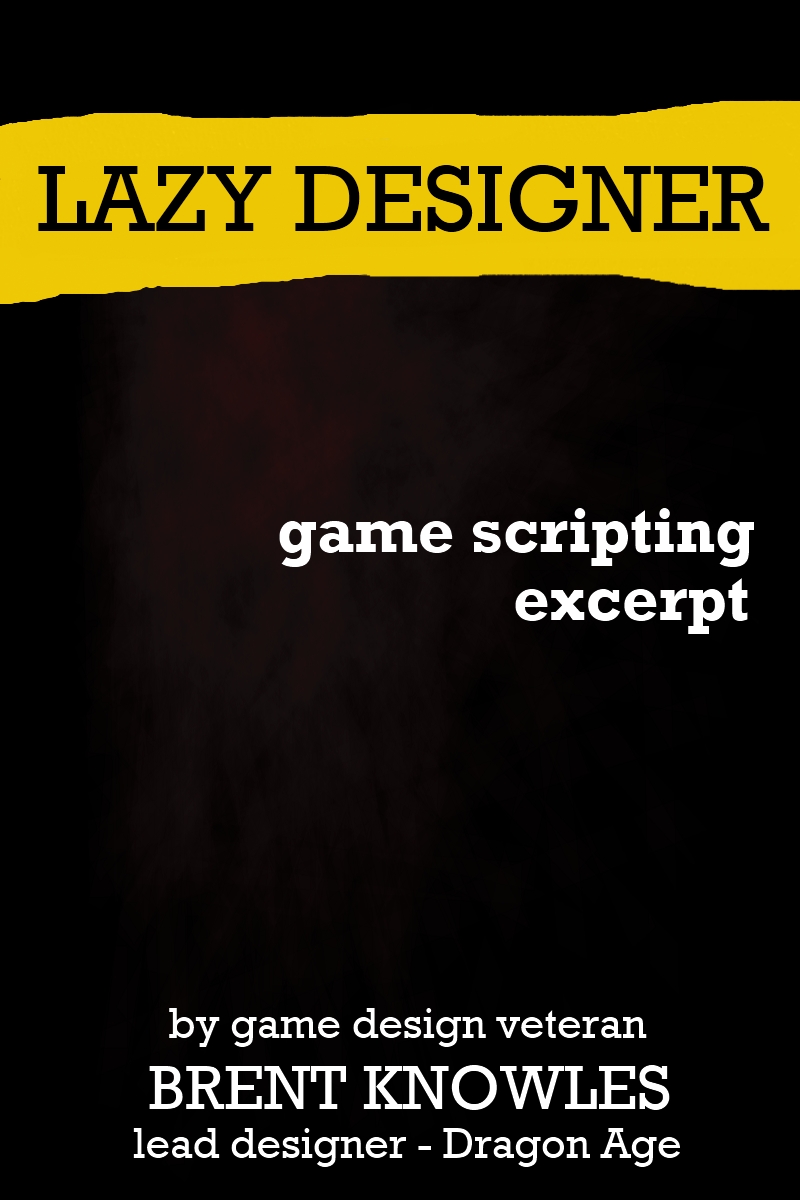Game Development Jobs – Design
I realize that I often toss out game development terminology that is probably not familiar to everybody reading the blog. If you ever stumble across something you don’t understand toss me an e-mail or leave a comment. This post will (hopefully) shed some light on various game development job categories.
There is little standardization across companies, in regards to positions so take these descriptions with a grain of salt. If there’s anybody reading this with experience at other development studios using different terminology please throw a comment on the blog with the labels you use for the various positions.
I’ll start with design, which, of course, I am most familiar with and then do a summary of other department positions.
DESIGN
Director of Design – At BioWare there were two ‘chains of command’… a game project chain (with a Project Lead and department leads and so on) and a design chain… the pool of all designers working on all games. These were led by a Director of Design who was responsible for hiring, skill improvement, allocating people to projects and resolving any ‘issues’ arising on projects that could not be resolved at the project level. At various times there was also an assistant design director. All designers, including leads, had to report to the design director.
Lead Designer/Creative Director
This designer was in charge of a game with responsiblities including managing the staff, acquiring (through the design department) additional staff, training, designing the game with the rest of the team, and high level creation and management of design documents. (This was the position I held for the bulk of my time with BioWare).
The next descriptions relate to design specializations. Each specialization generally had a lead (i.e., a Lead Writer, a Lead Cinematic Designer, et cetera) who was responsible for day to day management of that design subset as well as directing the ‘design vision’ for that subset.
WRITER
Writers generally created level design plans (usually in tandum with a technical/level designer) though not all writers created the levels they ended up writing dialog for. Especially when project scope changed writers might be assigned to levels planned by another writer or by others. Primarily the writers at BioWare wrote dialog — the lines each character in their areas of responsibility spoke.
Writers also had to write soundsets (the non-dialog utterances of characters, such as battle grunts and ambient chatter), item descriptions, journal descriptions, follower dialog, and menu help text.
EDITORS
Over time specialized editors were brought on. Writers had originally been editing their own work but to meet scheduling and quality demands editors were required. The editor would be responsible for making sure that naming patterns and style rules were enforced. As well, depending on the project, they would help shorten individual sentences or suggest places for words to be cut to meet word count budgets.
TECHNICAL DESIGNERS
My primary tasks when I started with BioWare were data entry (filling in ‘stats’ for creatures) and scripting. Scripting is the process by which creatures resources (dialog, art, animation, sound) are put into an art level and made to do ‘something.’ This varies by project but involves setting logic variables in dialog, placing creatures into levels and making them walk or fight, and many other lighter weight programming tasks that help transform otherwise static resources into a new reality for players to explore.
The thought was that most writers would be able to script their own work eventually, once the proper tools and training were in place and many of the writers did do this for a couple of BioWare’s earlier titles. But the reality was that there was so much dialog to write (and so much revision) that more dedicated technical designers were hired.
Senior technical designers generally assisted writers with designing gameplay levels. Some technical designers, depending on the project also created their own art levels.
Another subspeciality of technical designers are rules experts… basically the ones who build the rule systems (what the various powers do, how players advance in power, how monsters work and so on).
CINEMATIC DESIGNERS
In early games most (if not all) cinematics were created by animators, artists and sound engineers. However it became clear that due to the narrative demands of BioWare games there had to be a way to produce more cinematics (and to make dialog more cinematic) while reducing costs.
So a few technical designers started building small scenes in-engine (basically these designers created scripts, like they would for combat, but with the intention that they were showing interaction between game characters on the screen).
Most of these early cinematics were done using only repurposed existing animation and sound resources.
As the games became more sophisticated cinematic design became its own specialty with access to its own tools and other resources, while still under the umbrella of design.
A WORD ABOUT DESIGN POSITIONS
When I started with BioWare there was only three kinds of designers – writers, management, and ‘other designers’. There was a lot of overlap between the positions (i.e., management was writing and scripting, writers were scripting a lot, and scripters were sometimes doing a little writing). Over time as the games changed and the team grew the other specializations were created (i.e., technical designers originally created ‘design cinematics’ in games like Baldur’s Gate 2 and Neverwinter Nights and Knights of the Old Republic. The cinematic design position started to emerge after those titles.)
This was a general theme across all departments (and I suspect is fairly consistent across all growing companies — more specialization).
Anyways that’s enough about design. In the next post I’ll try to shed some light on programming positions at game developers.

